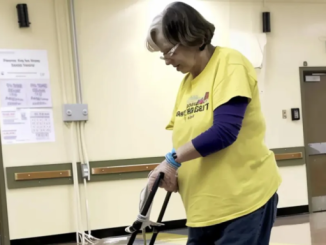Recognizing Early Warning Signs of Cancer
Your body has a remarkable way of signaling when something isn’t right, including early indicators of cancer. Being attentive to these signs can lead to early detection and timely medical intervention. If you experience any of the following symptoms, it’s important to consult a doctor for further evaluation.
Subtle Symptoms to Watch For
Cancer doesn’t always present itself in obvious ways. Sometimes, the signs are subtle and seemingly unrelated to the affected area. Identifying these early symptoms can be crucial for prompt diagnosis.
- Wheezing or Shortness of Breath – Many lung cancer patients recall this as an initial but overlooked symptom.

- Frequent Fevers or Infections – This can be a sign of leukemia, as abnormal white blood cells weaken the body’s immune response.
- Difficulty Swallowing – Commonly linked to throat cancer, but it may also be associated with lung cancer.
- Persistent Weakness and Fatigue – Fatigue is a widespread symptom of various cancers, especially when it appears alongside other warning signs.
- Loss of Appetite or Feeling Full Quickly – This could indicate ovarian cancer, particularly when accompanied by persistent bloating.
Physical Changes That May Indicate Cancer
Some cancers cause noticeable bodily changes. Recognizing these can be vital for early diagnosis.
- Rectal Bleeding or Blood in Stool – A major warning sign of colorectal cancer requiring immediate medical attention.
- Lumps in the Neck, Underarms, or Groin – Swollen lymph nodes could signal changes in the lymphatic system, potentially pointing to cancer.
- Excessive Bruising or Unexplained Bleeding – Abnormalities in blood cells, often linked to leukemia, can cause unusual bruising or prolonged bleeding.
- Bloating or Unexplained Abdominal Weight Gain – Sudden and persistent bloating is a frequent early symptom of ovarian cancer.
- Unexplained Weight Loss – This may be an early indicator of digestive system cancers or cancer that has spread to the liver.
- Red, Sore, or Swollen Breasts – Inflammatory breast cancer can cause these changes, and a flattened or inverted nipple could also be a concerning sign.
Pain-Related Symptoms
Persistent pain in certain areas may be an indicator of cancer. Paying attention to ongoing discomfort can be crucial.
- Unusually Heavy or Painful Periods or Bleeding Between Cycles – A common symptom of endometrial or uterine cancer.
- Chronic Cough or Chest Pain – Persistent coughing or chest pain could signal lung cancer or leukemia.
- Pelvic or Abdominal Pain – Pain and cramping in this area can be linked to ovarian cancer, while leukemia can cause an enlarged spleen leading to abdominal discomfort.
- Lower Back or Right-Side Pain – This can indicate liver cancer or, in some cases, breast cancer that has spread to the spine.
- Persistent Stomach Pain or Upset Stomach – Frequent stomach discomfort could be an early warning sign of colorectal cancer.
Steps to Lower Cancer Risk
Noticing these symptoms doesn’t necessarily mean you have cancer, but seeking medical advice can help rule out serious conditions. Early detection significantly increases the chances of successful treatment. Additionally, maintaining a healthy lifestyle, managing vitamin D levels, and reducing exposure to environmental toxins can help lower cancer risk.
Share this article with your friends and family to spread awareness about the early signs of cancer.
The Intriguing Experience of Pareidolia
Have you ever glanced at random objects and thought you saw faces? This curious occurrence is called pareidolia. Our brains are wired to identify shapes, patterns, and even sounds as something significant, often perceiving them as faces.
This explains why we might spot animals in clouds or faces in rocks. Even a worn tile floor, like the one in the image above, can reveal a subtle face when examined closely.
What is Pareidolia?
Pareidolia is a fascinating psychological and visual phenomenon where our brains detect familiar patterns, particularly faces, in everyday objects. This tendency comes from our evolutionary need to recognize friends, enemies, and others. Our brains are designed to identify faces, even when none are really there.

The Tile Face: A Closer Look
If you carefully study the image, you’ll see that the rough texture of the tile creates a face, complete with eyes, a nose, and a mouth. The “eyes” might appear as darker spots, the “nose” as a smudge, and the “mouth” as a faint curve. It’s as if the tile has turned into a hidden character, patiently waiting to be discovered. This instance of pareidolia transforms an ordinary tile into something mysterious, artistic, and perhaps a little eerie.
Why Do We See Faces?
Surprisingly, seeing faces in objects is more common than we realize. Throughout evolution, our brains have honed the skill of recognizing faces as a way to form social bonds and ensure survival. Detecting allies and recognizing threats was essential for early humans. As a result, our brains became finely tuned to notice even the smallest facial cues, sometimes even over-interpreting them.
Scientists suggest that this natural ability to see faces has influenced our emotional understanding, social interactions, and even our creativity. It shows the incredible capacity of the human brain to find meaning, even when it only exists in our imagination.
The Artistic Side of Pareidolia
Pareidolia is not just a scientific curiosity; it also has a captivating artistic aspect. Artists have long been inspired by hidden images in the environment. This type of art encourages us to see beyond the obvious and find beauty in the unexpected.
The face in the tile from the image above can be seen as a natural work of art, a masterpiece shaped by time, wear, and our imagination. It reminds us that art can be found anywhere if we just take the time to look.
In Conclusion
The next time you see a tiled floor, gaze at cloud-filled skies, or closely inspect a textured surface, take a moment to observe. You might just find a face staring back at you. Pareidolia reminds us how our brains interpret the world, revealing wonder in the most ordinary things. These moments of recognition are small reminders of the magic hidden in everyday life. So go out there and embrace the beauty of pareidolia!



Leave a Reply